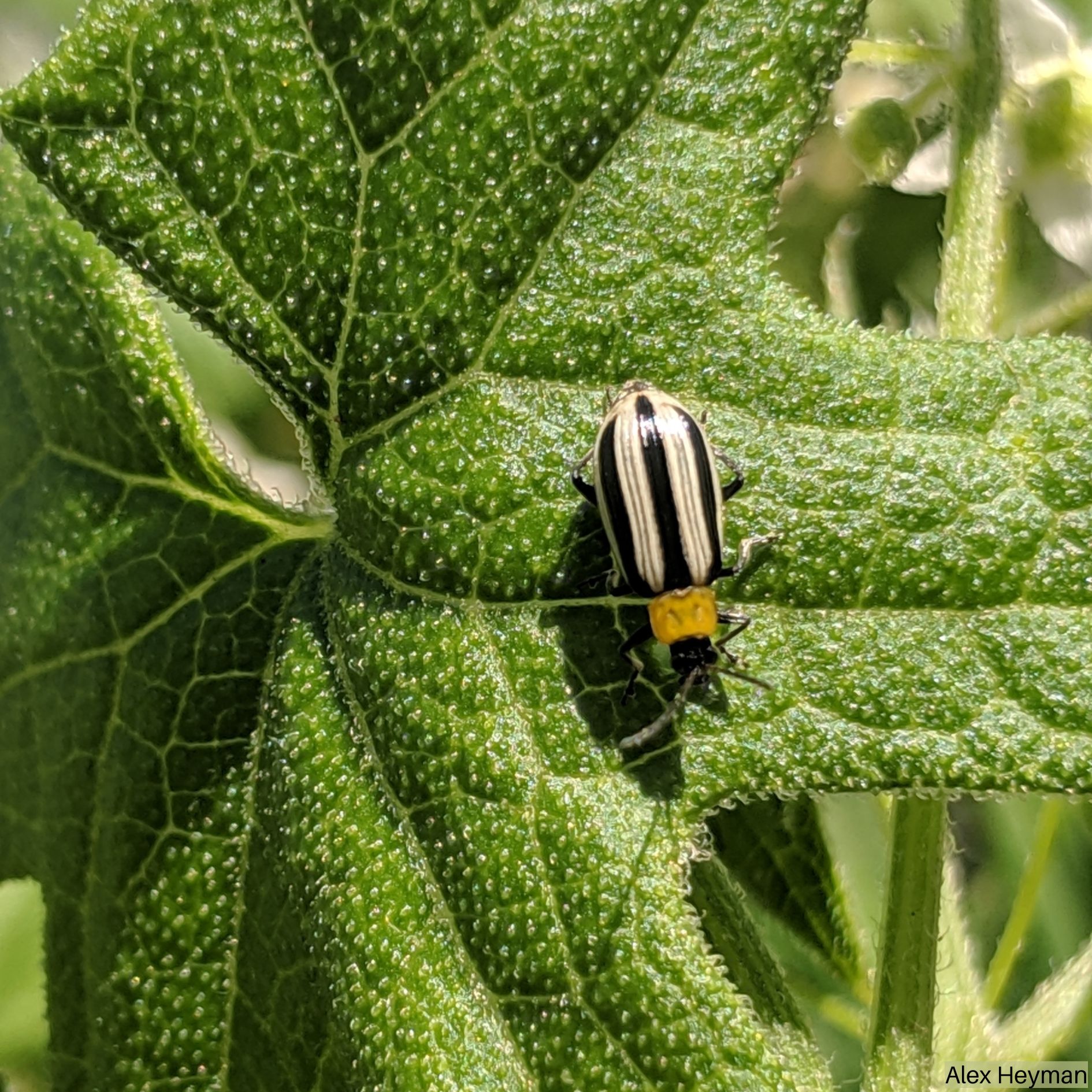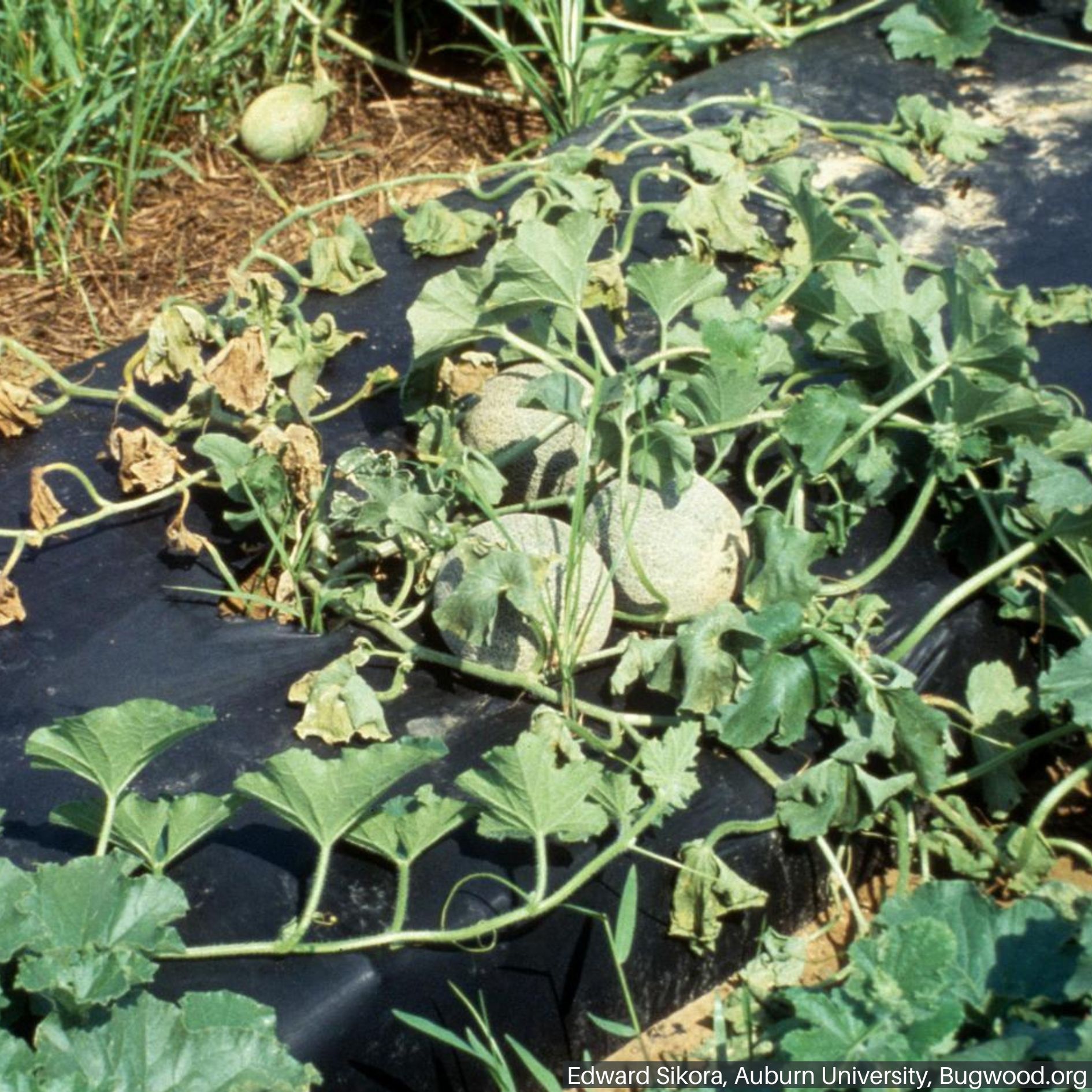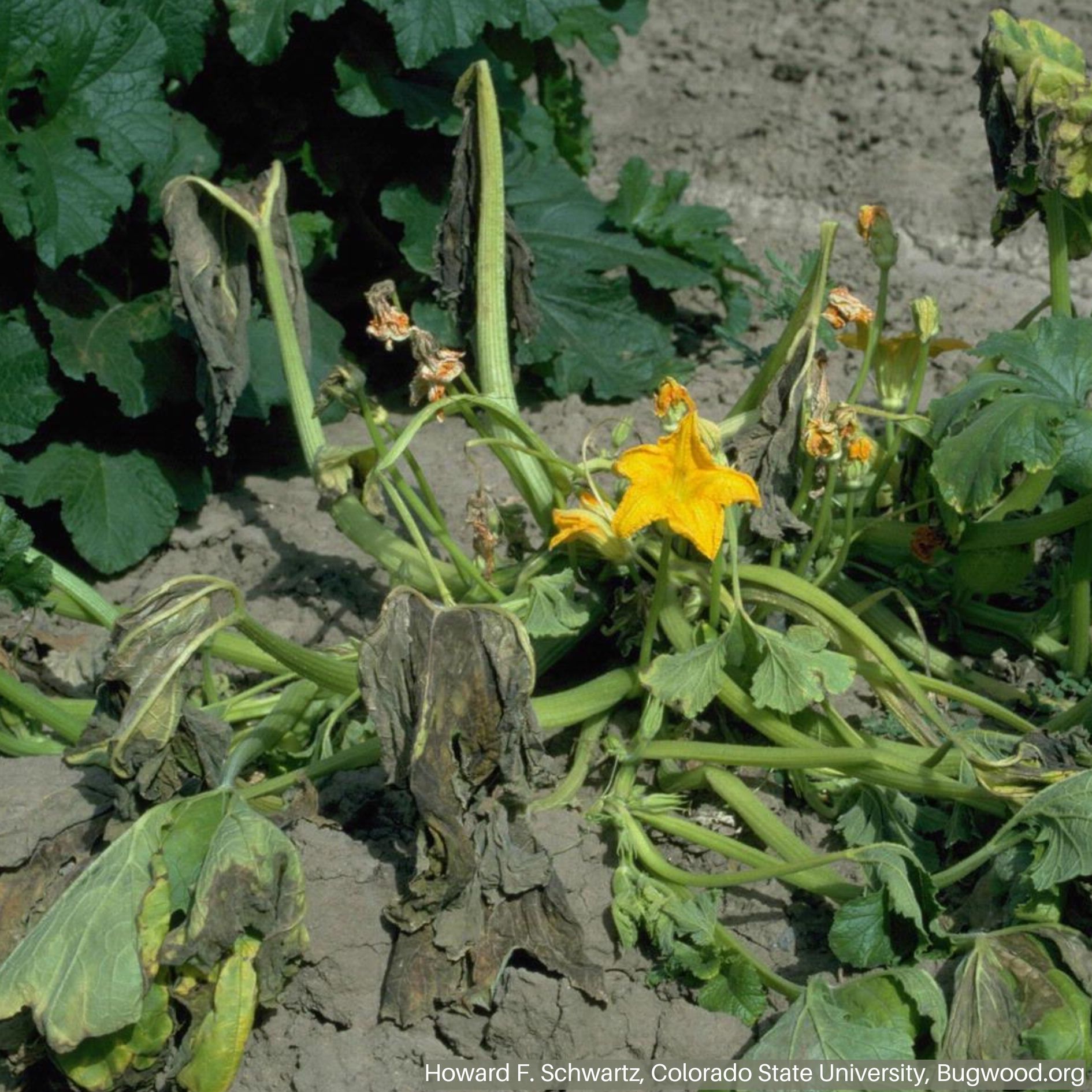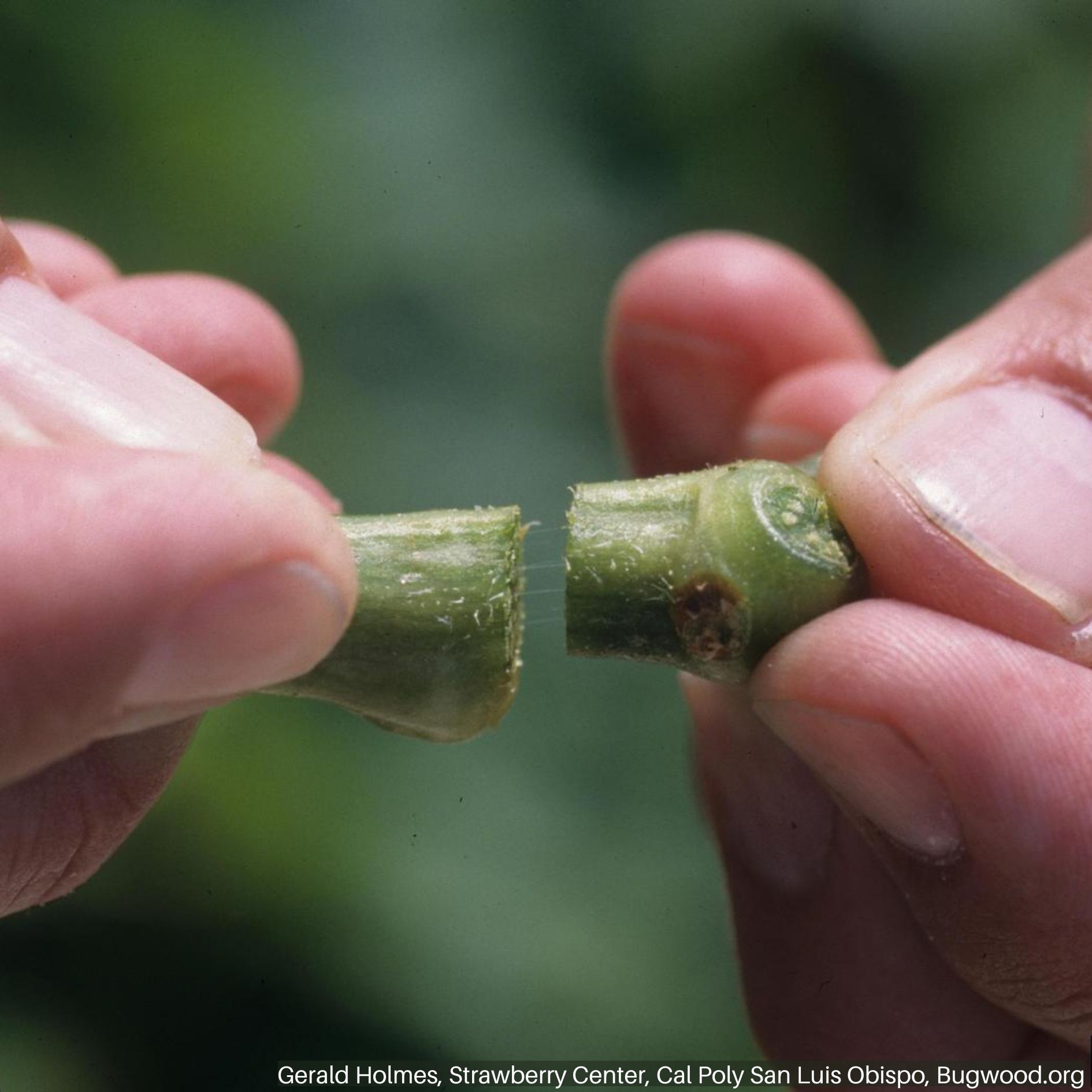Bacterial Wilt of Cucurbits
 Cucumber beetles are known to spread the bacteria.
Cucumber beetles are known to spread the bacteria. Melon plant with symptoms of bacterial wilt.
Melon plant with symptoms of bacterial wilt. Bacterial wilt in pumpkin.
Bacterial wilt in pumpkin. Strands of bacterial ooze from an infected vine.
Strands of bacterial ooze from an infected vine.HOSTS
- Cucurbits
DESCRIPTION
Bacterial wilt is caused by the bacteria Erwinia tracheiphila. The disease can affect all cucurbits, but cucumber and muskmelons, such as cantaloupe, are most susceptible. The disease is vectored by spotted and striped cucumber beetles.
BIOLOGY
The primary vector for bacterial wilt is cucumber beetles. Cucumber beetles that feed on infected plants will carry the bacteria on their mouthparts. When the beetle feeds on a new plant, the disease will be introduced from the contaminated mouthparts into the feeding wound. Cucumber beetles that carry the disease can overwinter and continue to infect plants the following year.
Once introduced into a host plant, the disease will enter the plant's vascular system to spread to the rest of the plant. As the bacteria multiplies, it will obstruct the vascular system, causing the plant to wilt. Once a plant is infected, there is no treatment, and should be removed.
SYMPTOMS
- Wilting of individual leaves or entire plants during the day
- Some recovery from wilting overnight
- Collapsed foliage, runners, and stems
- Brown, shriveled foliage
- Sticky bacterial ooze released from cut stems
GENERAL MANAGEMENT
There is no treatment for plants infected with bacterial wilt; prevention is key.- Remove and destroy infected plants
- Plant cucurbit varieties that are resistant to bacterial wilt
- Utilize floating row covers to keep cucumber beetles from accessing plants
- Use trap crops, such as blue hubbard squash, to reduce pest feeding on other cucurbits

